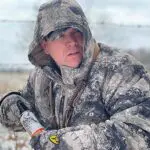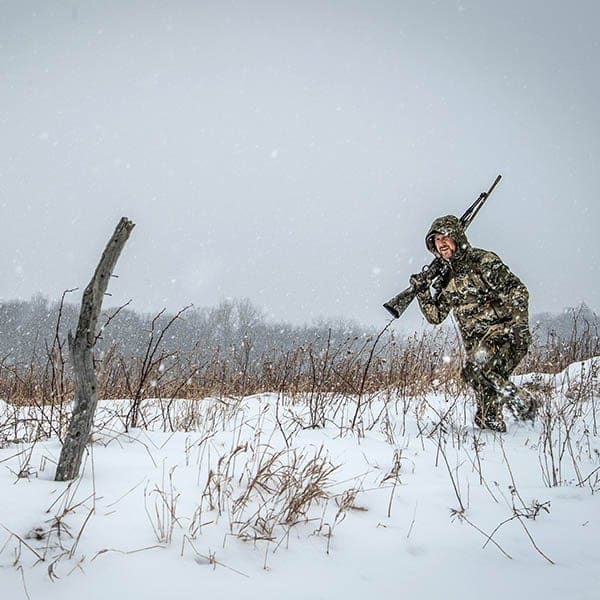Calling a coyote into shooting range and making a successful shot occasionally is something that almost any hunter can achieve. However, calling coyotes into shooting range consistently takes skill, practice, and patience.
One of the most discouraging factors for many beginning coyote hunters is having success early, loving the sport, and continuing to hunt, only to have a long streak of unsuccessful calling stands before making their next coyote harvest. Often, beginning hunters start to assume that their first taste of success is a fluke. Even though there is a feeling of discouragement when it has been a while since a harvest, it is essential to continue to hunt and be patient when trying to call coyotes. The reality of coyote hunting is that a coyote will only be harvested on some hunts. However, the success rate will increase by paying attention to details and learning more during every hunt, even during those that produce nothing.
Below are three tactics that every beginning coyote hunter should know before making their next calling attempt.
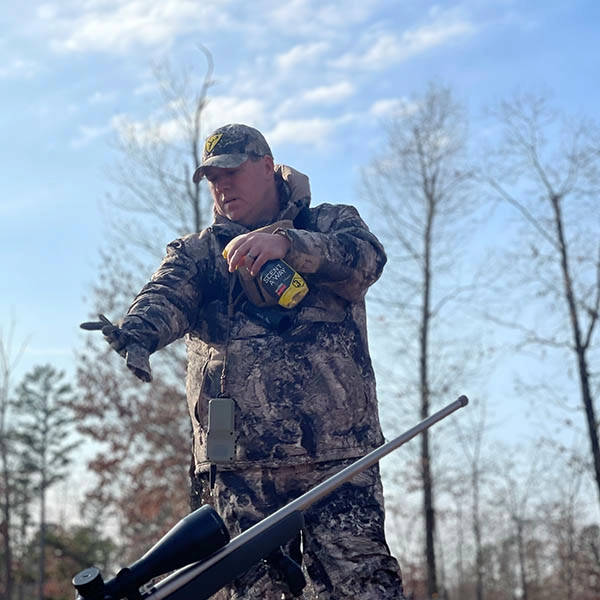
Use The Wind As An Advantage
A coyote’s most significant advantage against a hunter, without any debate, is its incredible sense of smell. A coyote has been noted to smell the human scent from over a mile away. To add creditability, a coyote can smell their prey underneath inches of snow and has over 220 million receptors in its nose, compared to humans, who have only 5 million.
Concerning a coyote’s nose, it is not hard to determine that using the wind to a hunter’s advantage is vital when trying to call coyotes into shooting range. To lower the chance of a coyote smelling the hunter, keeping the wind in their face or a side-wind, meaning blowing from side to side of where they are sitting, is essential. When a coyote responds to the sounds of calling, it constantly checks the wind, and it will be gone if it catches a hint of a hunter’s presence.
Using scent-eliminating sprays and wearing odor-controlling garments such as S3 silver antimicrobial technology found in Blocker Outdoors Predator Quest Stealth Fleece Hoodie can buy enough time to make a shot without being located. However, it is still necessary to always hunt with the wind in the hunter’s favor.
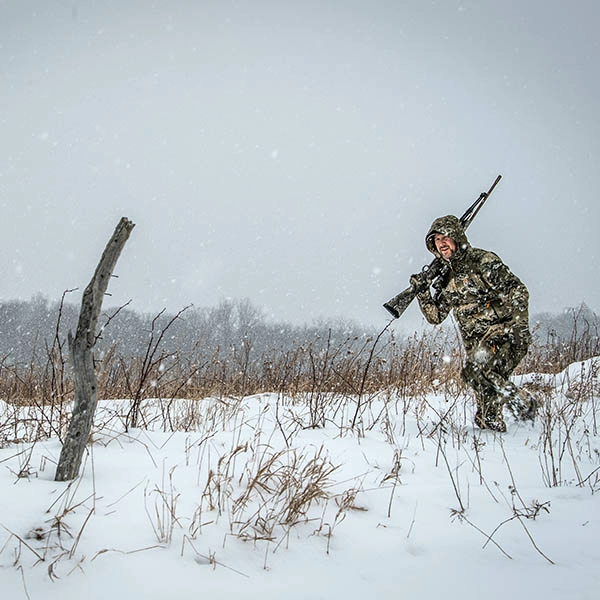
Watch How You Walk Into An Area Before Calling
How the predator hunter walks into the area they are going to call can make or break the hunt before they even sit down. When approaching the area; it is vital to keep the wind in their face, or the wind blowing away from the area coyotes will most likely approach.
The next tactic is to ensure that the hunter stays concealed from nearby coyotes while walking into an area. Avoid becoming silhouetted and remain hidden in the shadows or behind landmarks while walking. Coyotes often will not respond to calling because they had witnessed a hunter walk in or smelled them before they even started to call.
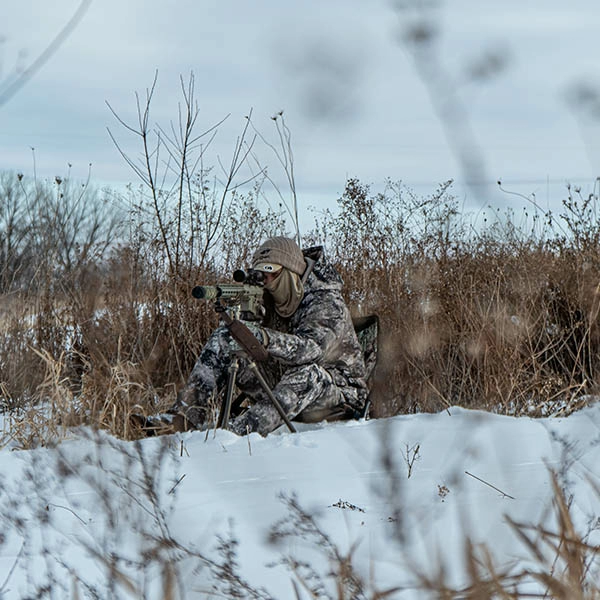
Fundamental Calling
Many beginning predator hunters believe that calling is the most critical factor in being a successful coyote hunter. Calling is the third tip because it is second to wind direction and the stand approach. Both of which can affect the hunt before it begins.
After obtaining the proper wind direction and arriving at the area where the hunt will occur without being detected, it is only then that one should worry about their calling regimen. One of the most common questions among beginning predator hunters revolves around what calls work the best. I refer to this tip as fundamental calling. The most used sound by predator hunters when using electronic or hand calls is the rabbit in distress. The reason for this specific call’s popularity is quite simply because it works. The key to beginner’s luck is not trying to be fancy with the call selection and keeping it simple.
A coyote always looks for a free meal to eat quickly before another coyote or predator arrives on the scene. When calling, use the sounds of prey in distress and the occasional subtle howl of a coyote. The combination of these sounds creates the image of a dying prey animal with a nearby coyote ready to snatch a meal. Any coyotes nearby assume that another is in the area, triggering their intense territorial instinct to get there before another.
The hunter should elect to choose the prey in distress mixed with a sporadic subtle howl on almost every calling stand opportunity. The sounds should be periodically made for at least twenty to thirty minutes. If nothing responds after thirty minutes, get up and move to the following location. The hunter should make several calling attempts in one day or night. When the fundamentals of calling are achieved, success will follow.
